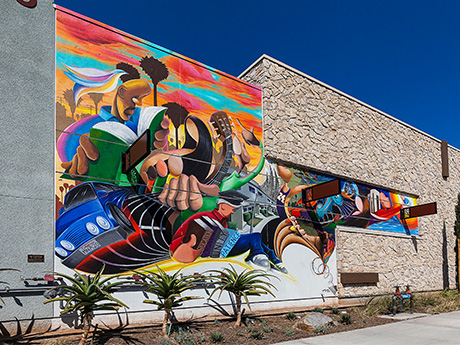By Greg Lyon, Chairman and Principal, Nadel Architects
The appearance of retail is always evolving in terms of space and function. Today, however, it is becoming increasingly important to ensure a shopping center is the “place to be” in a community to achieve long-term success.
This strategy allows developers to consistently deliver retail projects that attract crowds, encourage increased length of stay and repeat visits, and set the bar for the next evolution of retail.
But how can retail designers work with developers to create this go-to destination within a community?
Use Demographics, Psychographics to Inform Design Plans
When you’re creating authenticity, you want to analyze not just a region’s demographics, but its psychographics as well. Every, single community is different and there is no one-size-fits-all approach when it comes to creating a center that resonates.
For example, Trails at Silverdale, a 35-acre shopping and dining destination in Silverdale, Wash., speaks to the very distinct lifestyle of the region. Pacific Northwest shoppers enjoy the outdoors, are dedicated to sustainable living, and are drawn to authentic architectural elements that are innovative and youthful, while still conveying an elevated and sophisticated experience.
Having a diverse, complementary mix of tenants, programmed common areas, pop-up experiences, and experiential retail alongside traditional tenants are also essential to capturing the attention of consumers. When you do this correctly, your center meets their needs and wants.
Demographics and psychographics help inform design decisions and establish a community connection. This allows retail designers to make choices that will resonate with the local community and draw visitors in again and again.

The 35-acre Trails at Silverdale in Silverdale, Wash., caters to the Pacific Northwest lifestyle preferences. This includes shopping outdoors, sustainable elements and authentic architectural elements.
Establish a Connection with the Community
Shopping centers are increasingly diversifying and becoming true neighborhood hubs of many communities. For this to happen successfully, these destinations should integrate seamlessly into their environment and offer something unique to the location.
This can be achieved by, say, leveraging the natural surroundings or incorporating elements that tie into a location’s culture. This strategy was executed at Freedom Plaza. This is the retail component of the Jordan Downs mixed-use development in Watts, Calif., which incorporates the rich heritage of Watts’ residents into the center’s architecture, artwork and amenities. Design elements range from edgy, industrial-inspired, high-design buildings to contemporary street art that honors the site’s heritage while looking ahead to the community’s future aspirations.
For retail spaces, design elements that embody the culture of the community provide a meaningful way to connect with consumers and make them feel both comfortable and represented in a space.
Provide a ‘Living Room’ for the Community
Creative, intentionally programmed common areas are becoming the main draw for many shopping centers. These can be seen as shared ‘living rooms’ for the community. Providing spaces for consumers to gather and interact is key to profitability and foot traffic.
More stakeholders are recognizing opportunity in outdoor spaces, which have features such as a safe place for kids to play, dining areas, comfortable seating, free Wi-Fi, attractive landscaping and other amenities. These simple considerations are easy to incorporate into design and planning, and they create a huge difference for consumers who are looking to achieve a well-rounded shopping experience.
Creating the place to be in a community is achieved by understanding and connecting with the people who comprise that community. Having a diverse mix of tenants and an inviting common area for them to gather can help facilitate this.
When all these components come together, you create a connected, immersive, sophisticated retail experience that will entice consumers to return for future visits.



